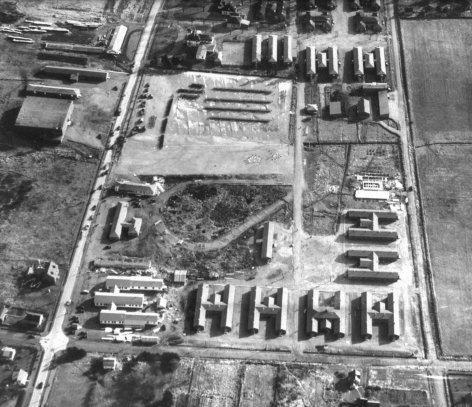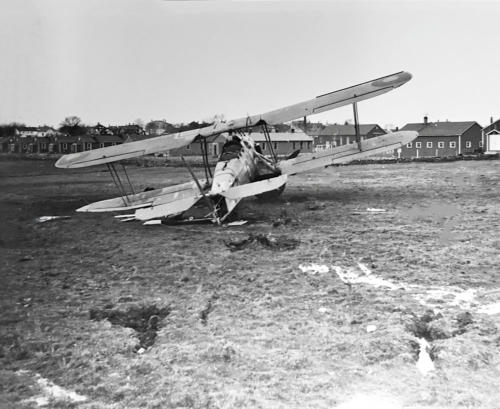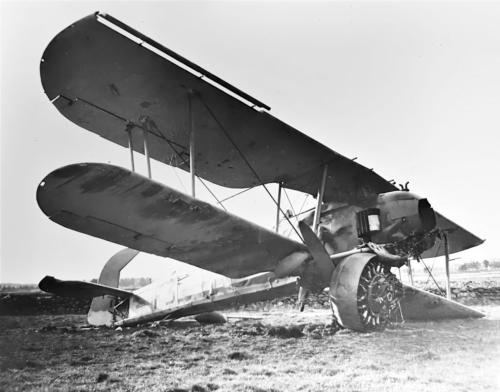Remembering the Telegraphist Air Gunners


copyright © Wartime Heritage Association
Website hosting courtesy of Register.com - a web.com company
Wartime Heritage
ASSOCIATION
Swordfish Crash at Camp 60 (CIBTC) Yarmouth, Nova Scotia
November 9, 1944
East Camp was a part of the World War II RCAF Station, Yarmouth, Nova Scotia, located on a twenty acre area of the airport with a
main entrance from the Chebogue Road in the Arcadia area of Yarmouth County. The Camp included forty buildings,including
aircraft hangars, messes, and quarters for the men. The building were arranged on a sloping hill upward to the hangars and main
runways.
# 1 Naval Air Gunnery School was used for training Telegraphist Air Gunners, Fleet Air Arm, Royal Navy as part of the British
Commonwealth Air Training Plan. It was a unique multi-service school with both ground and air training by the Royal Navy and
administration by the Royal Canadian Air Force.
Ground school and in-flight training took about ten months. Ground training was supervised by Royal Navy Petty Officers in the
School Training Centre. In-flight air experience included proper sending and receiving communication techniques and air gunnery
training while flying as crew in Fairey Swordfish and Avro Anson aircraft. The pilots were from the Royal Navy Fleet Air Arm, RCAF,
RNZNVR and the RNZAF.
Canadian Infantry Basic Training Centre was located on
Parade St. in the town of Yarmouth and trained army
personnel for service at home and abroad. By 1942 the
camp had a permanent staff of 357 officers and men.
Between 1940 and 1945 the numbers of officers and men
trained is estimated in excess of 20,000.
At various times throughout the war years the
relationship between the soldiers and the telegraphist air
gunners at East Camp was strained in part due to
competition over the local girls who found the young
TAGs with their British accents perhaps more charming
than the Canadian boys.
On one occasion a TAG attempted to ‘bomb’ Camp 60
with a bag of flour to be dropped from his swordfish.
That was prevented when his pilot noticed the bag of
flour in the plane and made the TAG take it out. They
did not fly over the camp and the pilot avoided it like the
plague!
On another occasion, a plane from East Camp circled over the camp in dense fog, unable to find the landing field, and Camp 60
personnel were prepared to shoot it down, believing it may be an enemy aircraft.
Thus on November 9, 1944, one can only imagine the reaction at Camp 60 as they watched the pilot of Swordfish HS220,
experiencing engine failure on take off and unable to make a return to the east Camp airstrip, descend and crash his plane on the
grounds of Camp 60.





- World War I - Menu
- WWI Stories and Articles
- Photos - Yarmouth Soldiers
- Selection of World War I Songs
- WWI Casualties of Yarmouth, NS
- Those Who Served - Yarmouth, NS
- WWI Casualties Digby Co. NS
- WWI Casualties Shelburne Co. NS
- Merchant Mariners (1915) Yarmouth, NS
- Canadian Forestry Corps - Non Yarmouth Birth/Residence Enlistments
- US Draft Registry - Yarmouth NS Born


- World War II - Menu
- WWII Stories and Articles
- Telegraphist Air Gunners
- WWII Casualties of Nova Scotia
- US Casualties with NS Connection
- Far East/Pacific Casualties with NS Connection
- Merchant Navy Casualties Nova Scotia
- Nova Scotia WWII Casualties Holten Canadian War Cemetery
- D-Day Casualties - Nova Scotia
- CANLOAN Program Casualties - Nova Scotia
- Battle of the Bulge Casualties - Nova Scotia
- WWII Casualties Yarmouth NS
- Yarmouth Casualties - RCAF RAF Canadian Army WWII
- Yarmouth Co., Marrages WWII
- Casualties Non-Born/Residents with Connection to Yarmouth Co., Nova Scotia.
- WWII Casualties Digby Co., NS
- Non-Nova Scotian WWII Casualties Buried in Nova Scotia
- WWII RCAF Casualties Aged 16-18
- Brothers/Sisters Who Served - World War II













